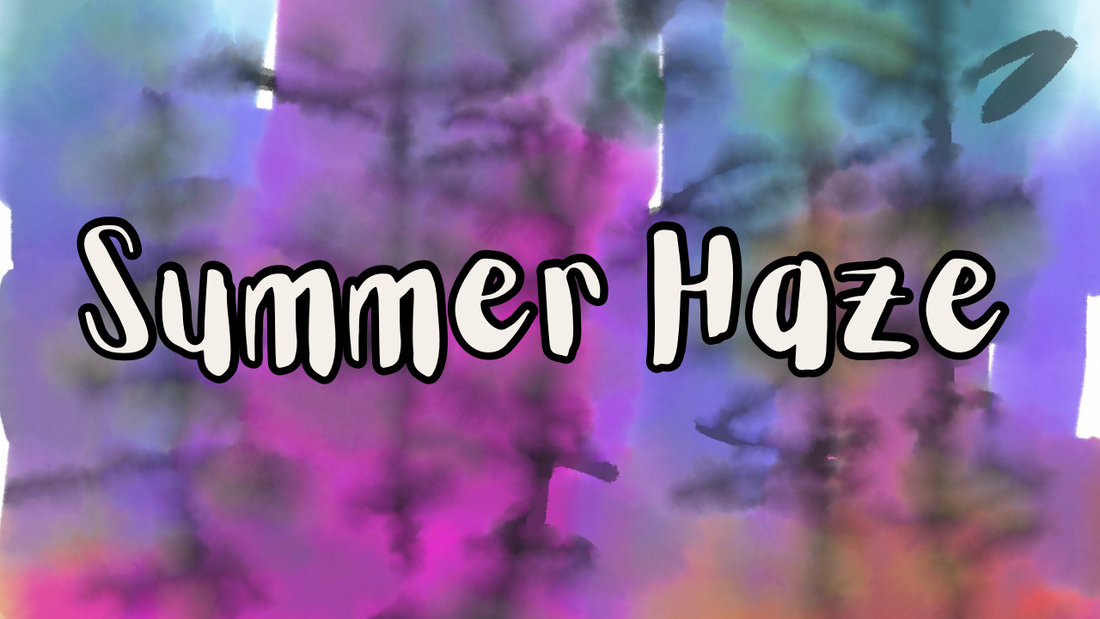
Summer Haze
Share
I love to paint outside in the summer.
There’s something about standing out in the landscape with my painting gear, the scent of wildflowers in the air, and the shifting light of the sky overhead. Known as en plein air painting—this creative practice— is still thrilling after doing it for more years than I want to say. But then again, there’s something to be said for the calm clarity of the studio: a good cup of coffee, painting to my favourite playlist, and using a reference photo.
I paint both ways. Each approach has its strengths, its limitations, and its particular magic, but this year I’m unable to indulge in what is now a summer ritual—en plein air painting.

The Case for Painting En Plein Air
I started out painting en plein air. I fondly remember sitting on river banks or in ditches with my mentor Valerie Ryan. Painting on location is raw and immediate. The landscape is right in front of you, alive with colour, movement, and mood. You’re not just painting what you see—you’re painting what you feel in that moment. The light changes fast, shadows stretch and shrink, and clouds move like actors across a stage. That urgency forces you to make quick decisions. Your brushwork gets bolder, your eye keener.
There’s also a visceral connection with nature. You hear the birds. You feel the temperature drop when a cloud covers the sun. These sensory details sneak into the painting. Viewers often say they feel the atmosphere in my plein air pieces—and I think that’s why.

But plein air isn’t always practical. The weather can turn. Bugs can bite. Paint dries too fast or not fast enough. And sometimes, you’re just trying to finish a painting while holding down your easel in a gust of wind.
This year, though, has presented an insurmountable obstacle, at least for me—smoke.
Yes, smokey skies are obscuring the landscape and triggering asthmatic attacks. Consequently, I’m unable to be outdoors when it’s smokey and this is an outdoor painting challenge I can’t overcome.
This summer, I’m painting in my studio most days.
The Case for the Studio and Reference Photos
Fortunately I like the studio—a controlled space where time slows down. When I work from a photo I’ve taken, I’m able to focus on composition, colour harmony, and form without the pressure of a changing scene. I can revisit the same image over days or weeks. I can push the mood, experiment, and let the painting evolve.
Photos are useful for capturing fleeting moments—a dramatic sunset, a particular slant of light through trees, or a quiet shoreline at dawn. They’re tools, not rules. I often change things: shift a tree, adjust the horizon, alter the palette. The photo is a reference, not a script.

The studio also lets me be more introspective. I’m not reacting to the landscape—I’m remembering it, filtering it through the lens of time and emotion. These paintings often feel more abstract, more symbolic, and more emotionally layered.
Which Is Better?
Neither is better. They feed each other.
Plein air work sharpens my observational skills while studio painting lets me dive deeper and push my work further. Often, I’ll do quick plein air studies, then expand on them in the studio, combining the immediacy of the field with the depth and polish of a studio painting.
I did a YouTube video comparing en plein air painting with studio work last year. You can check it out here.
For Collectors
When you’re choosing between a plein air piece and a studio work, consider the energy you’re drawn to. Plein air paintings often carry that fresh, spontaneous spirit—the rush of being there. Studio paintings, especially those based on plein air studies, tend to feel more contemplative, refined, and immersive.
Both tell a story. One is written in real time; the other is remembered like a poem.

If you’re interested in any of the featured paintings please send me an email and mention the blog title and whether it’s painting 1,2, 3 or 4.
Thanks for the read. Until next time,

